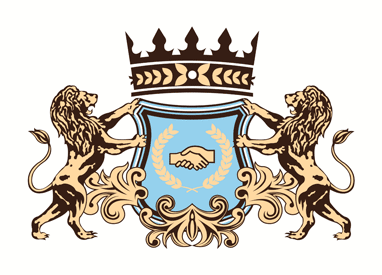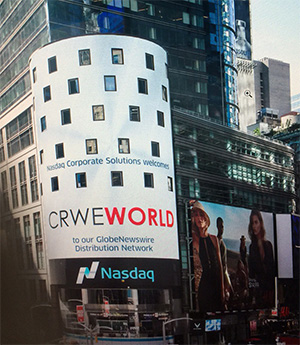Battery X Metals Highlights 2024 Achievements and Shares Vision for 2025
News Release Highlights:
Strengthened Balance Sheet:In 2024, Battery X Metals successfully raised $1.77 million through non-brokered financings, reduced liabilities by $1.28 million via equity conversions and renegotiated contractual obligations, and significantly improved its overall capital structure and working capital position.
Technological Innovations:In 2024, the Company advanced its eco-friendly froth flotation technology in partnership with a globally recognized Top 20 University. This effort focused on developing methods to recover battery-grade graphite and other critical materials from end-of-life lithium-ion batteries.
Battery-Technology Portfolio Expansion:In 2024, Battery X Metals acquired a 49% ownership stake in Li-ion Battery Renewable Technologies Inc. (LIBRT). LIBRT achieved key milestones in its proprietary battery diagnostics and rebalancing technologies, setting the stage for future development and commercialization.
Exploration Acquisitions & Results: In 2024, the Company secured 100% ownership of two lithium exploration projects in Quebec, spanning approximately 7,000 hectares (~17,297 acres) in key mining regions. It also advanced exploration at the Belanger Project in Red Lake, Ontario, targeting gold and copper. The Company holds an option to acquire 100% ownership of the Belanger Project, subject to a 3% net smelter royalty.
Vision for 2025:Battery X Metals is focused on advancing the development and validation of battery-grade graphite and critical material recovery technologies, expanding exploration efforts to meet the growing demand for battery and critical minerals, and LIBRT is focused on accelerating the commercialization of its proprietary battery diagnostics and rebalancing solutions, The Company remains committed to driving sustainable innovation in support of the global clean energy transition and the growth of the EV market.
VANCOUVER, BC /ACCESS Newswire / February 24, 2025 / Battery X Metals Inc.(CSE:BATX)(OTCQB:BATXF)(FSE:R0W)( WKN:A3EMJB)("Battery X Metals" or the "Company") an energy transition resource exploration and technology company, is pleased to share its 2024 achievements and its transformative vision for 2025.
Foundation Established to Participate in the Clean Energy and Electric Vehicle Transition
Battery X Metals achieved several major corporate and operational milestones in 2024, building a strong foundation for sustainable growth, innovation, and a commitment to advancing clean energies and the electric vehicle (EV) industry. The Company is pursuing a diversified 360° approach in the battery metals industry including the exploration of prospective battery metal properties, the recovery of valuable battery-grade materials from end-of-life batteries and resale of such materials back into the supply chain and the rebalance and extension of lithium-ion and EV batteries lifespan, through its portfolio company, LIBRT.
Battery X Metals takes a comprehensive approach to the lithium-ion battery ecosystem through its innovative initiatives. This includes leveraging its portfolio company, Li-ion Battery Renewable Technologies Inc. ("LIBRT"), which specializes in developing its technology to extend the lifespan of lithium-ion and EV batteries. In addition, Battery X Metals, in partnership with a global top 20 ranked university, focuses on developing proprietary technologies to recover battery-grade materials from end-of-life lithium-ion batteries, and exploring domestic battery and critical mineral projects to bolster the battery supply chain.
"2024 marked a pivotal year for Battery X Metals," stated Massimo Bellini Bressi, CEO of Battery X Metals. "Through strategic acquisitions, we positioned the Company for growth, strengthened our financial foundation, and advanced critical projects and partnerships. Collaborations with a globally recognized top 20 university and progress on exploration initiatives have reinforced our goal to become an active participant in sustainable battery material recovery and exploration. With a clear vision and well-defined priorities, we are ready to make 2025 a breakthrough year of execution, innovation, and growth in the industry."
Vision and Roadmap for 2025
Battery X Metals is committed to sustainability in the battery supply chain through the exploration of critical battery metal properties and the recovery of materials from end-of-life batteries in an eco-friendly way. By avoiding traditional battery material recovery methods which entail smelting and leaching, Battery X Metals aims to minimize environmental impact while addressing material shortages in the lithium-ion and EV battery market.
"We anticipate 2025 will be a transformative year for our Company," added Bellini Bressi. "With a clear roadmap and a dedicated team, we are ready to execute our plans diligently while remaining open to new opportunities that align with our vision. We are confident that our work will not only deliver value to stakeholders but also enable us to participate in the global clean energy and electric vehicle transition."
Looking ahead in 2025, Battery X Metals is focused on building on its foundation built in 2024, and delivering growth across several key areas including:
Lithium-ion Battery Material Recovery Technology
Strengthening Exploration Portfolio
Pioneering Proprietary Lithium-Ion Battery Rebalancing Technology, with LIBRT
Graphite Recovery Breakthrough with Global Top 20 University Research Collaboration Partner
Battery X Metals, through its wholly-owned subsidiary Battery X Recycling Technologies Inc., is advancing its sustainable lithium-ion battery recycling technology through its amended research collaboration agreement with a global top 20 ranked university 's Institute of Mining Engineering (the "Global Top 20 University"). The partnership has already yielded promising results, as evidenced by laboratory tests conducted with 500g Nickel, Manganese, and Cobalt (NMC)-dominant black mass samples using Denver Cell flotation devices. The research focuses on advancing proprietary froth flotation technology development designed to recover critical battery-grade materials such as graphite, lithium, nickel, cobalt, manganese, and copper, from end-of-life lithium-ion batteries, supporting a circular and sustainable battery economy.
Graphite, which comprises 95% of lithium-ion battery anodes1, is often neglected in traditional recycling methods, such as hydrometallurgy and pyrometallurgy2. Battery X Metals ' proprietary froth flotation technologyallows cathode-active materials (metal oxides) to be separated from anode-active materials (graphite) without destroying or damaging any of the components, as is often the case with high-temperature treatments3 and leachingprocesses4 such as pyrometallurgy and hydrometallurgy.
Achievements in 2024
In 2024, significant progress was made in refining the flotation process for recovering graphite from black mass. Key accomplishments included:
Optimizing Flotation Conditions: Tests identified the ideal balance of frother and collector, significantly improving froth quality and reducing flotation time.
Enhanced Efficiency: Pre-washing reduced flotation time from approximately 13-19 minutes to 5-7 minutes, while maintaining consistent recovery and purity.
Lithium Recovery: The liquid remaining after the flotation process contains a significant amount of dissolved lithium, which can be recovered through alternative recovery methods.
Areas for Improvement: Challenges such as unwanted flotation of metal oxides and the effects of graphite oxidation were pinpointed, creating opportunities for targeted refinements in the process. The presence of residual binder coatings on oxide particles were found to hinder graphite recovery and reduce the effectiveness of separating graphite from oxides. Current efforts are focused on removing these coatings and mitigating the negative impact of graphite oxidation.
These achievements established a strong foundation for further advancements in graphite recovery and oxide/phosphate separation.

2025 Update and Outlook
Pre-Washing Results:
As highlighted in 2025 reports, building on the findings from 2024, pre-washing was implemented in 2025 to eliminate lithium ions and humic acids-key impurities that could disrupt flotation efficiency. Flotation tests were conducted under the same conditions using pre-washed black mass, resulting in the following outcomes:
Faster Process: Pre-washing halved flotation time, with froth stabilizing within 5-7 minutes compared to 13-19 minutes in previous tests.
Reliable Recovery and Purity: Graphite recovery (~52%) and purity (~55%) remained consistent with prior results.
Reduced Impurities: Post-flotation wastewater was lighter in color, indicating a reduction in impurities like humic acids, though some remained.

Assay Validation:
Recovery and purity measurements were confirmed through two reliable assay methods:
1. Burning Test: Heating samples to 750°C burned off graphite, with the remaining material used to calculate content. Results matched expectations and confirmed accuracy.
2. Acid Dissolution Test: Metals were dissolved with strong acids, leaving only graphite. This method closely aligned with the burning test, reinforcing consistent recovery rates of ~51-53% and purity levels of ~55-56%.
Conclusion
Pre-washing black mass with water significantly reduced flotation time (from 13-19 minutes to 5-7 minutes) but did not improve graphite recovery (~52%) or purity (~55%). Metal oxides continued to float alongside graphite, likely due to binder coatings that were not fully removed.
The presence of yellow-brown impurities in the wash water suggests graphite oxidation, which may be limiting recovery. This could result from battery aging or sample preparation conditions, such as high-temperature drying.
Next steps will focus on testing unoxidized graphite, assessing binder removal techniques, and evaluating phosphate-based black mass samples to determine if oxidation is an inherent issue. While pre-washing improves flotation efficiency, further refinements are needed to enhance separation and recovery.
2. Effect of Solvent Pre-Washing on Flotation Performance:
Building on the pre-washing results, further flotation tests were conducted to evaluate the impact of pre-washing black mass with a solvent. The goal was to determine whether a solvent could remove organic binders from metal oxides, preventing their flotation alongside graphite and improving separation efficiency.
Flotation tests were carried out under identical conditions as prior experiments, using pre-washed black mass with water, followed by an additional solvent wash.
Key Findings:
Graphite Recovery & Grade (Compared to Tests Without Pre-Washing):
Single Wash with Solvent (Water + Solvent Pre-Wash): Graphite grade remained consistent at 55.2%, but recovery decreased by ~8.5 percentage points, reaching 42.35% compared to flotation tests using the same frother and collector specifications without pre-washing (50.91%).
Double Wash with Solvent (Water + Solvent + Water Pre-Wash): Graphite grade improved to 59.5%, marking a ~4% increase in purity, but recovery declined further to 39.95%, representing a ~10.9 percentage point drop compared to tests without pre-washing.
Metal Oxide Recovery & Grade:
Single Wash with Solvent: Metal oxide recovery increased by ~7.5 percentage points, reaching 75.44% (vs. 67.9% without pre-washing), with a grade of 64.68%.
Double Wash with Solvent: Metal oxide recovery saw a further increase to 78.6% (~10.7 percentage points higher than tests without pre-washing), though the grade slightly dropped to 62.45%.
Effect of Solvent:
Solvent pre-washing led to a small improvement in graphite purity (~4%), suggesting that some oxide particles were separated from the concentrate.
However, graphite recovery decreased compared to tests without pre-washing, indicating that while solvent removed some binder material, it did not fully eliminate oxide flotation interference.
The flotation process proceeded as expected, with froth formation remaining stable.
Flotation Performance:
The flotation rate remained stable, with froth forming within the expected timeframe.
Post-flotation wastewater was clear, suggesting a reduction in organic contaminants.
Assay Validation:
To determine the graphite content of each sample, the burning graphite-off test described above was performed. The procedure consisted of taking 2 grams of each sample and placing it in a furnace at 750°C for 2 hours, burning off the graphite. The residual material was then measured to determine the graphite content in each sample.
Conclusion:
While solvent pre-washing slightly improved graphite purity, it did not yield a significant advantage in separation efficiency. Graphite recovery declined compared to tests without pre-washing, suggesting that the removal of binder coatings was only partially effective. Metal oxide recovery increased, indicating a greater degree of separation, but the overall benefit of solvent washing remains marginal.
Future Testing Directions:
Future recovery technology development, conducted in collaboration with the Global Top 20 University and fully funded through June 30, 2025, will focus on advancing the process through the following initiatives:
Material Separation & Validation
Conducting tests on unoxidized black mass samples (real-world) and pure model oxide samples (lab-produced) to validate flotation behavior, refine separation efficiency, and improve recovery and purity rates.
Reverse Flotation Optimization
Testing surfactant-based flotation methods to selectively recover oxides while leaving graphite in the tailings (reverse flotation).
Optimizing flotation conditions to maximize recovery and purity levels for both graphite and oxides, improving overall material separation.
Phosphate-Based Recovery Studies
Obtaining and testing phosphate-based black mass samples (both real-world and lab-produced) to validate phosphate separation efficiency and optimize flotation conditions.
Developing and refining targeted recovery methods to achieve high-purity separation of graphite and phosphates.
Enhanced Recovery Techniques
Aim to increase graphite recovery rates, validate improvements, and quantify results to enhance separation efficiency, material yield, and purity.
Work toward advancing oxide and phosphate separation processes using specialized surfactants identified as effective collectors.
Seek to address variability in black mass composition across different battery chemistries by developing tailored processing solutions to improve recovery efficiency.
These efforts will build on past achievements to develop innovative, sustainable recycling technologies with improved efficiency and environmental benefits.
These results highlight the positive impact of pre-washing on process speed and impurity reduction, while assay results confirmed consistent recovery and purity. Moving forward, the planned research and collaboration provide an exciting opportunity to further refine and enhance the flotation process, driving sustainable recycling solutions and material recovery rates to new heights.
Strategic Vision and Partnership Opportunities
Battery X Metals is positioned to participate in the battery recycling industry with its proprietary froth flotation technology, which may enable recovery of battery-grade graphite before recyclers employ traditional hydrometallurgical or pyrometallurgical processes. This approach could provide recyclers with the flexibility to integrate graphite recovery into their existing workflows without requiring significant operational changes. By addressing a critical gap in current recycling methods, Battery X Metals aims to empower recyclers to enhance material recovery processes while maintaining operational efficiency.
For recyclers seeking a broader transformation aligned with eco-friendly initiatives, Battery X Metals ' technology may further optimize the entire material recovery process. Recyclers may alter or overhaul their operations to incorporate the Company 's technology, potentially spanning from graphite recovery to the recovery of oxides and phosphates. While this opportunity holds promise, further testing and evaluation will be required to validate recovery rates and optimize processes. Additionally, in due course, the Company plans to develop standard operating procedures (SOPs) and commercial-scale equipment requirements for all recovery methods, laying the groundwork for efficient and scalable solutions for its prospective partners.
Key Initiatives in 2025
Filing of Provisional Patents on Technology: Upon achieving successful validation and optimal recovery efficiency of graphite, oxides, and phosphates, Battery X Metals intends to file provisional patents for its proprietary froth flotation technology to protect its intellectual property.
Pursue IP Licensing and Joint Ventures:Once provisional patents are granted, the Company plans to license its technology or form joint ventures with existing battery recyclers. This strategy may position Battery X Metals as a downstream technology partner, enabling recyclers to integrate the Company 's solutions while unlocking additional value.
Develop Comprehensive Process Solutions:Battery X Metals is committed to developing and optimizing processes, SOPs, and commercial-scale equipment requirements for all recovery methods, including graphite, oxide, and phosphate recovery. These efforts aim to ensure the technology is reliable, efficient, and adaptable to the diverse operational needs of recyclers.
Applications Beyond Recycling:Beyond battery recycling, Battery X Metals ' froth flotation technology, in success, also has potential applications in the mining sector, with capabilities to recover valuable materials from tailings and other residuals, supporting more sustainable and efficient resource recovery efforts.
Strengthening Exploration Portfolio and Advancing Battery and Critical Mineral Strategies
2024: Strategic Acquisitions and Exploration Advancements
Acquisition of Two Quebec Lithium Exploration Projects
Battery X Metals expanded its lithium exploration portfolio by acquiring 100% ownership of two projects in Quebec, Canada: the Nunavik Leaf River Project and the Abitibi Reservoir-Dozois Project. Together, these projects span approximately 7,000 hectares (~17,297 acres), with each site covering around 3,500 hectares (~8,648 acres). Both are situated in highly active lithium exploration regions:
Leaf River Project (Nunavik, QC): Encompassing 83 claims, this project is strategically located adjacent to Eureka Lithium 's New Leaf Project.
Reservoir-Dozois Project (Abitibi, QC): Covering 52 claims, this project lies near Sayona Mining 's Abitibi Lithium Hub, a well-established region for successful lithium exploration.
Both properties are positioned in proximity to significant mining developments. The Nunavik Leaf River Project directly borders Eureka Lithium 's New Leaf Project, while the Abitibi Reservoir-Dozois Project is close to Sayona Mining Limited 's operations.
Leaf River Project (Nunavik, QC)5Réservoir-Dozois Project (Abitibi, QC)6

Exploration Results from Gold & Copper, Belanger Project (Red Lake, ON):
Battery X Metals advanced exploration at the Belanger Project, located in Ontario 's Birch-Uchi Greenstone Belt near Red Lake, one of Canada 's most prolific gold districts. The Project spans 109 unpatented claims across four townships. The Company holds an option to acquire 100% ownership (subject to a 3% net smelter royalty), and is required to pay three remaining cash payments of $5,500 each on or before February 28, 2025, April 30, 2025 and June 30, 2025 (for an aggregate total of $16,500). Refer to the Company 's January 6, 2025, news release for more details on the exploration results.

2025 Vision: Unlocking Exploration Potential
Battery X Metals remains committed to unlocking the full potential of its exploration portfolio. Building on the momentum from 2024, Battery X Metals announced on January 24, 2025, that it engaged an arms-length geological consulting firm (the "Geological Firm") to conduct property evaluations and preliminary work programs for the Company 's core battery and critical mineral exploration projects. The scope of the engagement includes an assessment of claim status and annual costs, a geological overview of the properties, a review of historical work completed (based on Company-provided data), and recommendations for 2025 field programs to advance strategic exploration initiatives, which remain subject to market conditions, available financial resources, and practical business considerations.
The engagement of the Geological Firm underscores the Company 's commitment to advancing its core battery and critical mineral exploration projects, which include:
Belanger Project(Red Lake, ON): A gold-copper projected located in one of Canada 's most prolific gold mining districts.
Leaf River Project (Nunavik, QC): A lithium project adjacent to Eureka Lithium 's New Leaf Project.
Reservoir-Dozois Project (Abitibi, QC): A lithium project situated near Sayona Mining 's Abitibi Lithium Hub.
Y Lithium Project (Bailey Lake, SK): A prospective lithium project.
Pioneering Lithium-Ion Battery Rebalancing Technology, with LIBRT
2024: Acquisition and Milestone Achievements
Battery X Metals expanded its battery metals focus in 2024 with the acquisition of 49% of LIBRT, with a call right, whereby it has the right to acquire the remaining 51% of the common shares of LIBRT for a period from December 6, 2024 to December 6, 2026 for additional consideration of 3,030,303 common shares in the capital of the Company. The exercise of the call right is subject to compliance with the policies of the Canadian Securities Exchange (the "CSE").
In 2024, LIBRT made progress in its mission to extend lithium-ion and EV battery longevity. LIBRT is a Vancouver, BC-based development-stage technology company at the forefront of the electric vehicle (EV) industry, focused on creating innovative solutions to diagnose the health and extend the lifespan of lithium-ion batteries.
In 2023, 23% of light-duty vehicle sales in British Columbia were EVs, up from 18% in 20227. As the number of EVs continues to grow, the need for advanced technical expertise to service these vehicles becomes increasingly critical. Furthermore, it is estimated that by 2031, nearly 40 million EVs, plug-in hybrid EVs, and hybrid EVs worldwide will exceed their warranties8, leaving owners vulnerable to battery degradation.
LIBRTs proprietary software and hardware technology aims to address this challenge by diagnosing and extending the lifespan of EV batteries. This innovation is being developed with the aim to enhance the sustainability of electric transportation and the goal to provide EV owners with a more cost-effective, environmentally friendly ownership experience by reducing the need for costly battery replacements. LIBRT 's core technology, validated by the National Research Council of Canada (NRC), focuses on two key areas: battery health diagnostics and cell rebalancing. The NRC validation demonstrated the technology 's ability to effectively diagnose and correct cell imbalances in lithium-ion battery packs, recovering nearly all lost capacity due to cell imbalance and ensuring accurate capacity measurements, while maintaining performance consistency and adhering to safety standards. This validation was conducted on battery modules composed of 12 cells (100Ah each) and 15 cells (72Ah each), demonstrating its effectiveness at this modular scale. As EV battery packs and other applications are typically comprised of multiple modules with varying cell quantities, including configurations of 12 and 15 cells, the technology 's capabilities to rebalance EV batteries remain applicable and effective.
LIBRT has successfully developed a first-generation prototype diagnostic and rebalancing machine and, pursuant to the BJPN Second Agreement, is now progressing toward the development of a second-generation prototype ("Prototype 2.0"). This next phase includes key refinements and updates, such as optimized hardware dimensions, reduced weight, and advancements in related equipment, including enhanced state-of-health (SOH) diagnostics, airtightness testing, and improved connectivity. Prototype 2.0 is expected to be completed by April 2025, followed by rigorous testing protocols to ensure optimal performance and reliability. As LIBRT continues to advance its proprietary hardware and software technology, it remains focused on delivering innovative and sustainable solutions to meet the growing demand for EV battery diagnostics and renewal.
These advancements establish LIBRT as a participant in lithium-ion and EV battery solutions, aiming to tackle the critical challenges of capacity decline of battery packs and expensive replacements. By extending the lifecycle of battery materials within the supply chain, LIBRT aims to support the clean energy transition and promote a more sustainable future.
2025 Vision: Commercialization and Strategic Initiatives
As LIBRT advances the development of its technologies, its state-of-health diagnostic and rebalancing solutions present a significant opportunity to enhance EV sustainability, address material shortages, and create value in both primary and secondary markets. Key initiatives for 2025 include battery pack rebalancing adaptor development, standard operating procedure (SOP) development, and user interface (UI) development. Additionally, completing the full payment to BPJN, as outlined in the Company 's news release dated September 29, 2024, to secure Prototype 2.0 delivery, conducting thorough testing for market readiness, securing a commercial agreement with an equipment manufacturer for large-scale production, and initiating pre-sales are essential milestones. These initiatives are not just steps in the process but are fundamental to successfully commercializing the technology and unlocking its full market potential.
Key Initiatives for 2025
1. Provisional Patent Filings for Proprietary Technology:
LIBRT has engaged a leading Canadian patent law firm to file provisional patents in early 2025, with the aim of protecting the key innovations in its advanced lithium-ion battery state-of-health (SOH) diagnostics and rebalancing technologies. These innovations include (i) proprietary software algorithms designed to evaluate the SOH of lithium-ion and EV batteries, actively rebalance individual cells, and optimize battery lifespan and performance, (ii) proprietary hardware developed to implement active rebalancing processes and ensure optimal functionality and efficiency of battery cells, and (iii) a holistic integrated system that combines software and hardware to deliver comprehensive diagnostics and rebalancing, maximizing the performance and longevity of lithium-ion and EV batteries.
2. Battery Pack Rebalancing Connector Development
LIBRT is actively pursuing collaborations with automotive service centers to design and implement rebalancing connectors that ensure compatibility across a wide range of EV brands and models. This initiative encompasses:
Developing brand- and model-specific connectivity ports to enable Prototype 2.0 and its successor(s) to interact with specific branded battery packs, facilitating the rebalancing of battery cells during both initial and subsequent rebalancing processes.
Designing and implementing secondary connectivity ports on battery packs to support integrated and efficient rebalancing for future maintenance cycles.
3. Standard Operating Procedure (SOP) Development
LIBRT is also working to establish alliances with automotive service centers and automotive associations to assist in the development and third-party validation of standard operating procedures (SOPs) for rebalancing services. These efforts focus on:
(i) Establishing comprehensive SOPs for battery pack removal, rebalancing, and reinsertion processes.
(ii) Implementing secondary ports to streamline future rebalancing processes.
(iii) Ensuring airtight battery pack integrity post-rebalancing to maintain safety and performance standards.
(iv) Training qualified personnel to carry out rebalancing procedures efficiently and effectively.
Through establishing these partnerships and initiatives, LIBRT aims to promote its EV battery diagnostics and rebalancing capabilities in the industry.
4. User Interface Development
LIBRT plans to develop a user-friendly interface for its rebalancing machine, focusing intuitive operation, accessibility, and an appealing design. The interface aspires to emphasize simplicity and efficiency, enabling technicians and service providers to perform diagnostics and rebalancing processes with ease. To achieve this, LIBRT plans to engage a User Experience (UX) and User Interface (UI) designer, along with a software engineer, before the commercialization phase. Together, they will be tasked with designing, developing, and implementing the interface, and ensuring it is both functional and visually engaging while meeting user needs and adhering to industry standards.
5. Data Retention and Optimization
Throughout the commercialization phase and beyond, LIBRT plans to implement a comprehensive data retention strategy to securely manage and optimize all data collected during diagnostic and rebalancing processes. To support this initiative, LIBRT intends to collaborate with established server and cloud technology providers, leveraging their expertise to create a scalable infrastructure with advanced security protocols to protect sensitive battery data.
Initially, LIBRT plans to outsource specialized functions to third-party experts to ensure secure storage, effective data management, and the extraction of meaningful insights from its proforma growing repository of information. Over time, and depending on available human and financial capital, the Company may transition these functions in-house to maintain closer control and further enhance its capabilities. Future data strategies will focus on using this expanding dataset to improve the accuracy of state-of-health (SOH) diagnostics and predictions.
This approach is designed to build a centralized and secure data vault that grows with each battery serviced, becoming an essential tool for advancing the lithium-ion battery industry and supporting long-term innovation.
6. B2B Wholesale and Retail Distribution Strategy
After development and proof of concept of the technology, LIBRT 's business strategy intends to target sales and distribution to two distinct market segments: auto recyclers (wholesale) and automotive service centers (retail). Each segment presents unique opportunities for LIBRT 's diagnostic and rebalancing technologies:
(i) Auto Recyclers (Wholesale):
LIBRT plans to introduce its diagnostic and rebalancing technologies to auto recyclers, offering innovative solutions for managing EV battery packs from decommissioned vehicles. These technologies are designed to maximize the utility and market value of battery packs by enabling auto recyclers to:
Verify Battery Capacity: Assess remaining battery capacity with advanced diagnostics, ensuring transparency for potential buyers.
Increase Battery Value: Restore battery capacity through rebalancing, making packs more appealing to wholesalers and retailers.
Enhance Usability: Install secondary ports - if and when necessary - during rebalancing to simplify future maintenance and increase resale potential.
(ii) EV Service Centers (Retail):
Following the successful proof of concept and commercialization, LIBRT plans to roll out its rebalancing machines to specialized service centers, creating a cost-effective alternative to expensive battery replacements. By targeting vehicles with intact battery packs, this rollout aims to enhance service offerings at these centers through:
Routine Diagnostics: Integrating battery health assessments into regular maintenance for actionable insights.
Rebalancing Solutions: Providing efficient, cost-effective services to extend battery life and delay replacement needs.
Enhanced Customer Loyalty: Strengthening relationships by offering practical, savings-driven solutions.
(iii) Pre-Sales of Rebalancing Machines:
To accelerate market adoption and build early momentum after proof of concept and immediately prior to commercialization, LIBRT intends to pre-sell its rebalancing machines to auto recyclers and service centers in H2 2025.
By addressing evolving business needs of auto recyclers and service centers, LIBRT 's business strategy aspires to provide a comprehensive value proposition, driving sustainability, increasing battery lifecycle utility, and supporting the EV ecosystem.
Additional 2024 Corporate & Operational Achievements
Attendance at the World 's #1 Home Energy & Electric Vehicle Show, Everything Electric Canada 2024
Battery X Metals Inc. and its portfolio company, LIBRT attended Everything Electric Canada 2024 from September 6-8 in Vancouver, BC. Recognized as the world 's #1 home energy and electric vehicle (EV) show9, the event brought together industry professionals and consumers to explore advancements in EVs, renewable energy, and sustainable technologies. Hosted by the Fully Charged SHOW, the event engages over 4 million monthly viewers across its platforms10.
During the event, Battery X Metals and LIBRT participated in discussions about their innovative technologies to industry peers.
Battery X Metals detailed its eco-friendly froth flotation technology being developed to recover battery-grade materials like graphite, lithium, nickel, and cobalt from end-of-life lithium-ion batteries, promoting a circular economy while reducing environmental impact.
LIBRT shared information about its proprietary EV battery diagnostics and rebalancing technologies, including SOH diagnostics and cell rebalancing solutions, aimed at extending battery lifespan and providing a potentially cost-effective alternative to EV battery replacements.
The event allowed both companies to engage with industry leaders and consumers, emphasizing their roles in advancing sustainable lithium-ion and EV battery solutions. Feedback underscored the potential of their technologies to address key challenges in recycling, diagnostics, and battery longevity.
Strengthened Balance Sheet and Improved Capital Structure
In 2024, the Company strengthened its balance sheet through strategic initiatives, including the completion of multiple non-brokered private placement financings, raising gross proceeds of $1,773,149.94. Additionally, the Company converted payables and liabilities owed to certain insiders and creditors into equity, totaling $1,280,805, and renegotiated corporate awareness agreements with certain arm 's-length providers, reducing obligations by $250,000. These measures significantly decreased accounts payable, accrued liabilities, and overall working capital commitments, strengthening the Company 's financial position. These initiatives reflect strong belief and confidence from stakeholders in the Company 's future and its ability to deliver long-term value.
The Company also improved its capital structure by completing a consolidation of its issued and outstanding common shares on the basis of three and one-third (3.3) pre-consolidation common shares for every one (1) post-consolidation common share (the "Consolidation"), effective as of December 10, 2024. The Board of Directors proceeded with the Consolidation to provide the Company with increased flexibility to pursue additional financing opportunities, further supporting its strategic goals and long-term growth prospects.
New Leadership & Board of Directors
The Company welcomed a revitalized leadership team and board of directors in 2024, bringing diverse expertise across finance, corporate strategy, legal affairs, business development, and operational management. The new members include Massimo Bellini Bressi (Director, Chief Executive Officer, and President), Dallas Pretty (Chief Financial Officer and Corporate Secretary), Howard Blank (Independent Director), and Martino Ciambrelli (Independent Director). This dynamic team is united by a shared vision to drive the Company 's next phase of growth and evolution. The Company also restructured its Audit Committee, which now consists of Mr. Howard Blank (Chair), Mr. Massimo Bellini Bressi, and Mr. Martino Ciambrelli.
1ECGA, 2 National Library of Medicine, 3 Rho Motion, 4 LA Ist, 5 Eureka Lithium Corp., 6 Sayona Mining Ltd., 7 BC Gov News, 8 IEA, 9 Everything Electric, 10 Everything Electric
About Battery X Metals Inc.
Battery X Metals (CSE:BATX)(OTCQB:BATXF)(FSE:R0W, WKN:A3EMJB) is an energy transition resource exploration and technology company dedicated to advancing domestic battery and critical metal resource exploration while developing proprietary technologies. The Company focuses on exploring battery metals, recycling battery materials, and extending the lifespan of lithium ion and electric vehicle (EV) batteries through its portfolio company, LIBRT1. For more information, visit batteryxmetals.com.
1 Li-ion Battery Renewable Technologies Inc., 49% owned portfolio company
On Behalf of the Board of Directors
Massimo Bellini Bressi, Director
For further information, please contact:
Massimo Bellini Bressi
Chief Executive Officer
Email: mbellini@batteryxmetals.com
Tel: (604) 741-0444
Disclaimer for Forward-Looking Information
This news release contains forward-looking statements within the meaning of applicable securities laws. These statements relate to the Company 's objectives, strategies, and future plans, including the development, commercialization, and deployment of proprietary technologies, exploration initiatives, and financial objectives. Specific forward-looking statements include expectations regarding LIBRT 's Prototype 2.0 development, market entry, patent filings, strategic partnerships, development of standard operating procedures, and commercialization of its state-of-health diagnostic and rebalancing technologies. Additionally, forward-looking statements include anticipated outcomes of the Company 's proprietary froth flotation technology, such as improvements in graphite recovery and broader applications in battery recycling and mining sectors. Forward-looking statements also relate to exploration and development plans for the Belanger Project, Leaf River Project, Reservoir-Dozois Project, and Y Lithium Project, involving activities such as mapping, geophysical surveys, geochemical testing, and drilling programs aimed at unlocking the value of battery and critical mineral assets. The release also includes statements about the Company 's financial growth strategies, including additional financing opportunities, operational cost reductions, and revenue generation through pre-sales of proprietary technologies, licensing opportunities, and commercialization efforts. Projections about the global clean energy transition, lithium-ion battery demand, and EV adoption trends are referenced, along with the anticipated impact of these trends on the Company 's business. Further forward-looking statements relate to the anticipated benefits of collaborations with globally recognized universities, research institutions, automotive service centers, equipment manufacturers, and other stakeholders, as well as the Company 's commitment to sustainability, the circular economy, and advancing battery technology and critical mineral exploration. These forward-looking statements are based on current expectations, assumptions, and beliefs as of the date of this release. However, they involve known and unknown risks, uncertainties, and other factors that could cause actual results or events to differ materially from those expressed or implied. Risks include, but are not limited to, changes in market conditions, commodity prices, or regulatory environments; the ability to secure financing or comply with regulatory requirements; technical challenges in the development, testing, or commercialization of proprietary technologies; potential delays or setbacks in exploration, development, or commercialization efforts; dependence on third-party collaborations, partnerships, and licensing agreements; competition in the battery and critical mineral markets; and changes in consumer demand, global supply chains, or technological advancements. Battery X Metals assumes no obligation to update or revise any forward-looking statements to reflect events, circumstances, or changes in expectations, except as required by law. Investors are cautioned not to place undue reliance on these forward-looking statements and are encouraged to refer to the Company 's public filings on SEDAR+ for further risk disclosures.
SOURCE:Battery X Metals
View the original press release on ACCESS Newswire
© 2025 ACCESS Newswire. All Rights Reserved.



















